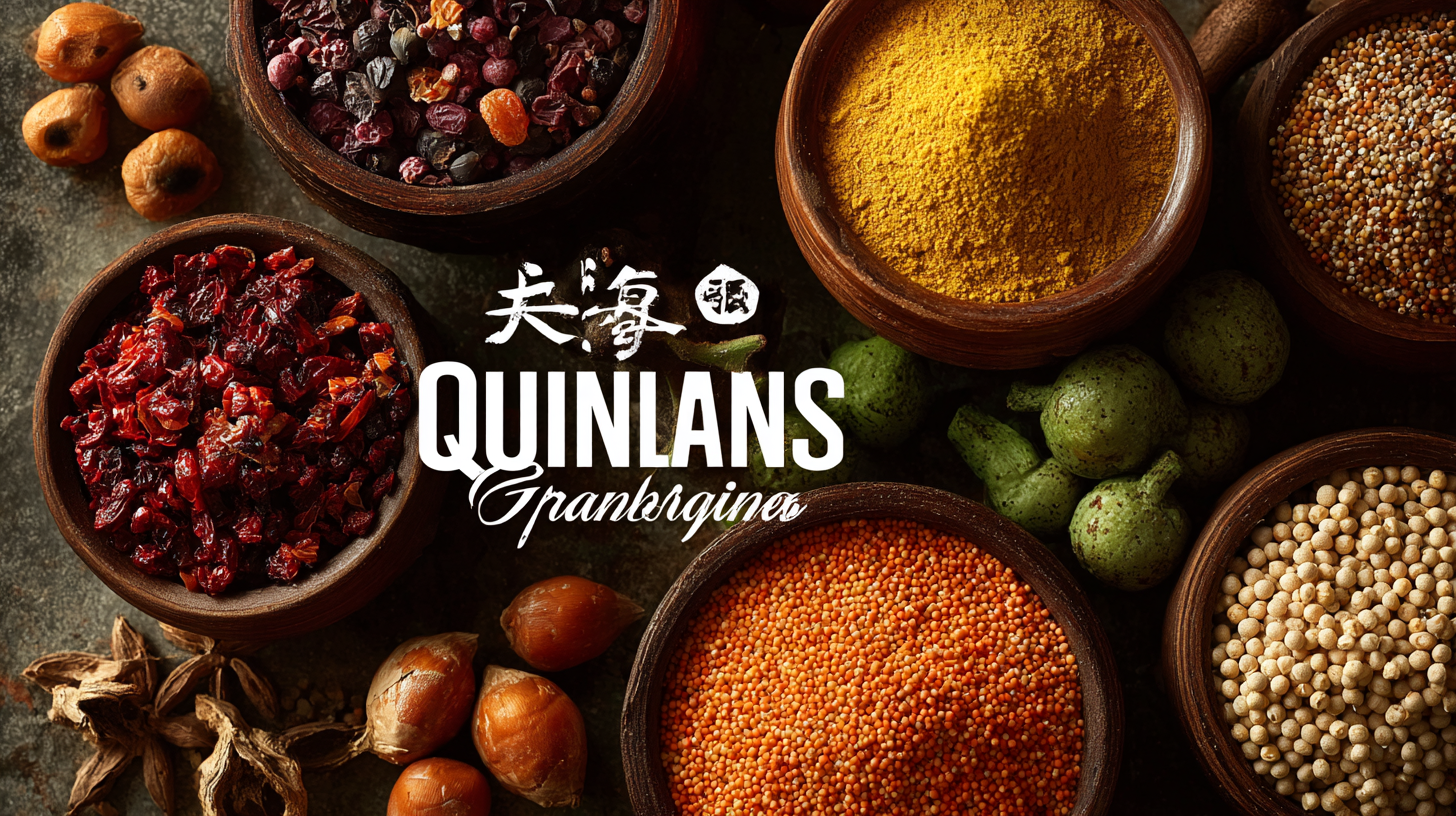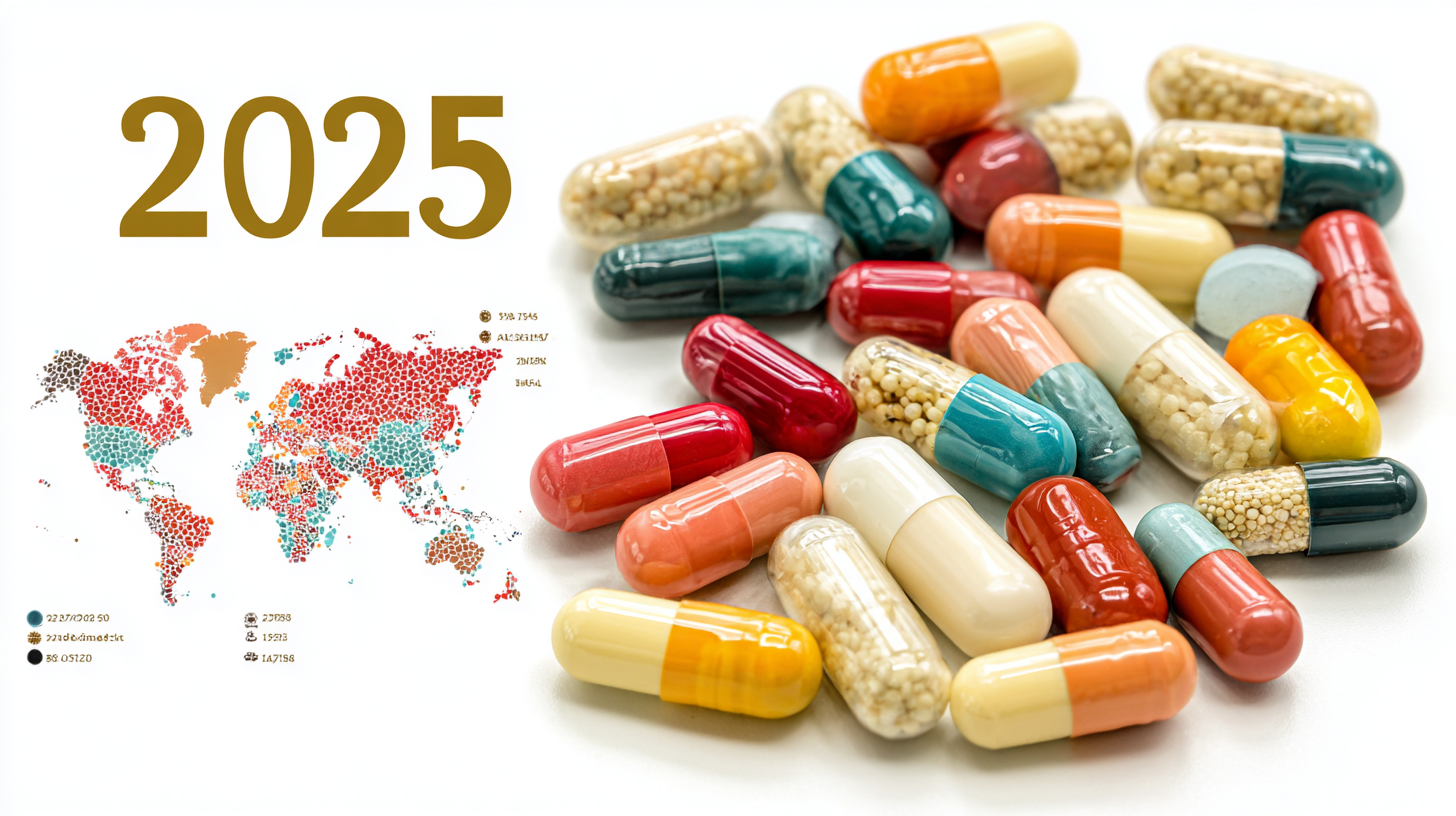2025 Market Insights: The Rise of Best Qibanqing Granules and Industry Growth Data Analysis
The year 2025 is poised to witness significant transformations in the healthcare sector, particularly in the realm of traditional Chinese medicine with the rise of Qibanqing Granules. Recent industry reports indicate a robust growth trajectory, with the global market for herbal medicines expected to reach USD 114.39 billion by 2027, growing at a CAGR of 7.4% during the forecast period. As consumer interest in natural remedies continues to expand, Qibanqing Granules are increasingly recognized for their potential therapeutic benefits in managing respiratory conditions. This surge in popularity can be attributed to a growing body of clinical evidence supporting their efficacy, alongside a shift towards preventive healthcare measures among consumers. Our analysis will delve into the underlying factors driving this trend, including market demand, competitive landscape, and future projections, providing valuable insights for stakeholders in the industry.

Emerging Trends in Qibanqing Granules Leading Up to 2025
The market for Qibanqing granules is witnessing significant transformation as we approach 2025, driven by emerging trends and consumer preferences. As health and wellness become a central focus for many, the demand for natural remedies and supplements has surged. Qibanqing granules, known for their potential benefits in supporting respiratory health and strengthening the immune system, are gaining popularity among consumers looking for holistic solutions. This trend reflects a broader movement toward cleaner, plant-based products in the wellness sector.
Moreover, advancements in research and technology are paving the way for enhanced product formulations in the Qibanqing granules market. As scientific studies continue to validate the effectiveness of these granules, manufacturers are likely to invest in innovative extraction processes and product development. This dynamic evolution in the industry not only supports growth but also positions Qibanqing granules as a staple in the health supplement market leading into 2025, especially as consumers become increasingly informed about their choices and seek out products that align with their health goals.
Market Dynamics and Growth Drivers for Qibanqing Granules
The market for Qibanqing granules is witnessing significant growth, driven by a confluence of dynamic factors. Increased awareness of health and wellness is prompting more consumers to seek natural remedies, with Qibanqing granules gaining traction for their purported benefits in traditional medicine. The rise in chronic health conditions and a growing preference for herbal treatments among younger demographics are further fueling demand. As consumers gravitate toward preventive healthcare, Qibanqing granules are positioned as a popular choice for maintaining overall well-being.
Additionally, technological advancements in extraction and formulation processes are enhancing the quality and efficacy of Qibanqing granules, making them more appealing in the competitive market landscape. Companies are investing in research and development to innovate product lines, ensuring they meet the evolving preferences of health-conscious consumers. With strategic marketing and distribution channels expanding, the accessibility of Qibanqing granules is likely to increase, contributing to their market growth. The interplay of these factors creates a robust environment for the industry, indicating a promising trajectory for Qibanqing granules in the coming years.
Data Analysis: Key Statistics Influencing Industry Growth
In recent years, the qibanqing granules industry has witnessed significant growth, driven by several key statistics that reveal deeper insights into market dynamics. According to a report by Grand View Research, the global market for herbal granules is projected to grow at a CAGR of 7.5% from 2023 to 2030, indicating a robust demand for natural remedies. This rise in popularity can be attributed to an increasing consumer preference for herbal and alternative medicines, propelled by the growing awareness of their benefits in holistic health.
Furthermore, a recent analysis by Market Research Future highlighted that the Asia-Pacific region dominates the market, accounting for approximately 40% of global sales in 2022. This trend is primarily driven by rising disposable incomes and a shift towards preventive healthcare among consumers. The report notes that the digitalization of healthcare and the growing e-commerce platforms for selling herbal products are also key factors facilitating market expansion. As the industry continues to evolve, these statistics underscore a trend toward increased accessibility and consumer engagement within the qibanqing granules market, fueling its growth trajectory toward 2025 and beyond.

Innovative Solutions and Applications in Qibanqing Granule Production
As we delve into the innovative solutions within the production of Qibanqing granules, it's essential to highlight how advancements in technology are shaping this industry. The emergence of automated manufacturing processes has significantly enhanced efficiency and consistency in granule production. These high-tech solutions not only streamline operations but also reduce waste, leading to a more sustainable production model. By leveraging data analytics, producers can now monitor quality parameters in real-time, ensuring that each batch meets the required standards.
Furthermore, the applications of Qibanqing granules are continually expanding, driven by research and development efforts. From pharmaceutical uses to dietary supplements, these granules are recognized for their therapeutic properties. The integration of herbal compounds and scientifically designed formulations has opened new avenues for consumers seeking natural remedies. As more industries realize the potential of Qibanqing granules, collaborative approaches between researchers and manufacturers are crucial in developing products that cater to emerging consumer demands and wellness trends.

Future Projections: Opportunities and Challenges in the Qibanqing Market
The Qibanqing market is poised for significant growth in the coming years, driven by increased health awareness and the rising demand for natural remedies. As consumers seek alternatives to traditional pharmaceuticals, Qibanqing granules, known for their efficacy in treating various ailments, are becoming increasingly popular. This trend presents both opportunities and challenges for manufacturers and distributors within the industry. Companies must adapt to changing consumer preferences while maintaining the quality and integrity of their products.
However, the road ahead is not without obstacles. Regulatory hurdles and quality control issues can hinder market growth. Furthermore, the competitive landscape is rapidly evolving, with new entrants vying for market share. To thrive, businesses need to invest in research and development to innovate their offerings and improve marketing strategies that resonate with target audiences. Successful navigation of these challenges will determine which companies emerge as leaders in the Qibanqing granule market by 2025.
2025 Market Insights: The Rise of Best Qibanqing Granules and Industry Growth Data Analysis
| Market Segment | 2023 Market Size (USD Million) | 2025 Projected Market Size (USD Million) | CAGR (2023-2025) | Key Opportunities | Challenges |
|---|---|---|---|---|---|
| Qibanqing Granules for Digestive Health | 150 | 220 | 12% | Increasing health awareness | Regulatory approvals |
| Qibanqing Granules for Weight Management | 200 | 300 | 15% | Rising obesity rates | Market competition |
| Qibanqing Granules for Skin Health | 120 | 180 | 14% | Growing cosmetics sector | Ingredient sourcing |
| Qibanqing Granules for Immune Support | 170 | 250 | 13% | Heightened health focus post-COVID-19 | Consumer skepticism |





